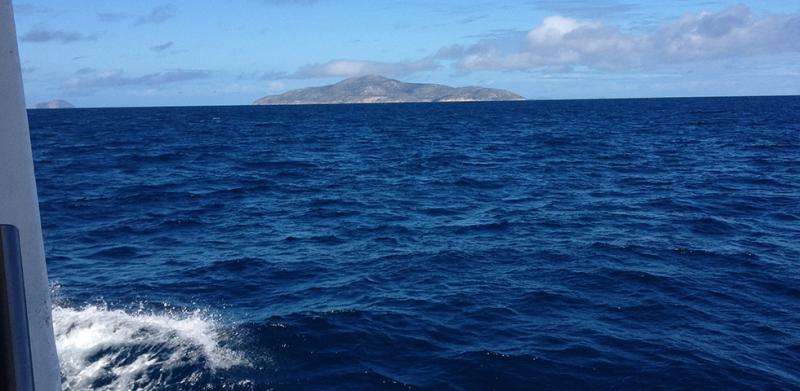How does the Great Barrier Reef get its nitrogen fix?

When Captain James Cook and the botanist Sir Joseph Banks navigated Australia's Great Barrier Reef (GBR) in the 1770s they described blooms of "sea sawdust" we now know to be the cyanobacterium Trichodesmium. Similarly, in 2014, a UTS led research voyage found the species in abundance, but with the benefit of new molecular biological techniques they were also able to identify other important species of bacteria that could help solve a scientific puzzle.
Paradoxically, although coral reefs are generally areas of high biological productivity, the surrounding marine waters are often low in nutrients, especially nitrogen. One way that high levels of biological productivity may be supported is through the activity of a specialised group of microorganisms. Nitrogen-fixing bacteria convert nitrogen gases, which are abundant but unavailable to most organisms, into essential bioavailable forms, allowing the nitrogen to be incorporated into the food web. Nitrogen-fixation is hence one of the most essential biochemical processes on earth.
The research team, led by scientists from the Climate Change Cluster (C3) at UTS, along with collaborators from UNSW and the Australian Institute of Marine Science, conducted a study across waters spanning 10 different locations within the GBR. The results of the survey, published in Frontiers for Microbiology provide the first quantitative evidence for the potential ecosystem level importance of nitrogen fixation in GBR waters.
Lead author Dr Lauren Messer explains the study is important because the GBR is largely a nitrogen-limited, low nutrient system, especially during the tropical dry season (austral winter) when the research was undertaken.
"Nitrogen fixation by marine bacteria might alleviate nitrogen limitation within this important ecosystem by introducing new nitrogen into the water column. This new nitrogen will then be available to support the growth and production of phytoplankton in the region under times of nitrogen stress," she says.
Dr Messer, who undertook the study as part of her PhD candidature in the UTS Climate Change Cluster Ocean Microbes and Healthy Oceans research program said that this was fresh information for the GBR and suggests a greater potential for dinitrogen fixation in the region.
"Because of the molecular techniques we now have available we can target the bacterial genes responsible for facilitating nitrogen fixation and this allows us to identify 'who' is capable of this process. We can also determine if they are active or not," she says.
Dr Messer's PhD supervisor and leader of the Ocean Microbes and Healthy Oceans research program, Associate Professor Justin Seymour, said that the findings can inform future research efforts to incorporate the activity of diverse dinitrogen fixing bacteria into the marine nitrogen budget for the GBR.
"Lauren's research has successfully united a suite of sophisticated approaches to deliver unprecedented new insights into the biological and chemical processes that underpin the function of one of the planet's most important and threatened marine ecosystems," he says.
More information: Lauren F. Messer et al. Diversity and Activity of Diazotrophs in Great Barrier Reef Surface Waters, Frontiers in Microbiology (2017). DOI: 10.3389/fmicb.2017.00967
Provided by University of Technology, Sydney
















